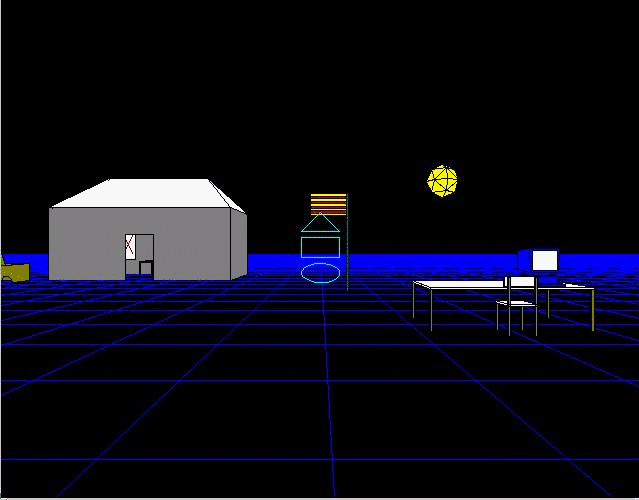
The Ithaque World
IRC notably consists of forums you can connect to and participate in to discuss ideas, make friends, find information, etc. The number of forums is now huge and it makes it difficult for a novice user to find the one that can potentially interest her/him. I still have a bad memory of the first time I tried it. After connecting and experimenting some commands, I got stuck into one of the discussion groups. Some people detected my presence and sent me messages asking me to identify myself. I found myself unable to select the right command to move back and I had to zap the window to escape. I swore then I would not touch it again, even with a pole.
Later, when I heard about the WWW5 Artificial Intelligence workshop, I attempted to connect to the discussion forum that was created for it. This forum was organized as a set of conference rooms. You select one room or another according to the discussion topic that is posted in the main hall. I hopelessly tried commands to get the room list to proceed. But unable to go further, I remained in the lobby.
Virtual reality systems rely much on the performance of their hardware and software components. However, most of these components are not yet affordable for many of the users. And the best choice for the base components is still a matter of debate.
Some people think that many devices are necessary to bring a reality feeling: Exoskeleton, gyroscopic goggles, haptic sensors, etc. I believe that the very core does not lie in these devices. As noted by Philippe Quéau [1], virtual reality simply brings the cognition power of images to the mere users. It enables to transform gigabytes of floating point numbers or any complex data set into a tractable sketch.
Provided you have enough of graphic processing power on your desktop to render 3-D scenes, the idea is appealing. The counterpart is that it is much more difficult to interact with the interface. This interaction is even almost impossible for a novice. The first time I tried to move in virtual worlds, it didn't take long before I got seasick, my ``body'' upside-down, crying for mercy.

Ithaque's agent structure is similar to that of many other interactive dialogue systems. It features speech recognition and speech synthesis devices, a syntactic parser, semantic and dialogue modules. In addition, this agent has a reference resolver that works in coordination with the user's gestures enabling her/him to name and finger objects, a geometric reasoner to understand the world, and an action manager to bring the user in a relatively continuous motion where she/he wants to go.
Conversational agents are a subject of active research. Other projects are addressing issues similar to ours. Most of them are not specifically aimed at the Web yet. They range from the control of a disk changer to flying with an air fighter:
Basically, these agents should be able to respond to natural language commands, therefore have syntactic capabilities, and beyond, implement various sorts of faculties. Faculties are not the same for all the agents. They should enable, for instance, navigation in virtual worlds or search for a specific page. Many of them however resort to language understanding and to reasoning: Syntax, planning, time and geometric reasoning, learning, intention, etc. Such techniques are currently assembled under the name of Artificial Intelligence.
In conclusion, I believe that these possibly malformed compounds, artificial intelligence, as criticized by John Searle [3], virtual reality, a paradoxical oxymoron, and linguistics, that sometimes has simply been a subject of dogmas and doctrines (see for instance [4], Introduction), could be the enablers of a Web for the masses.